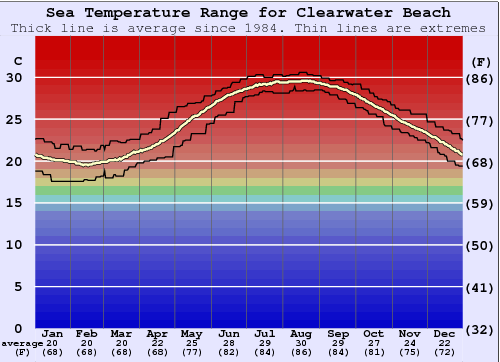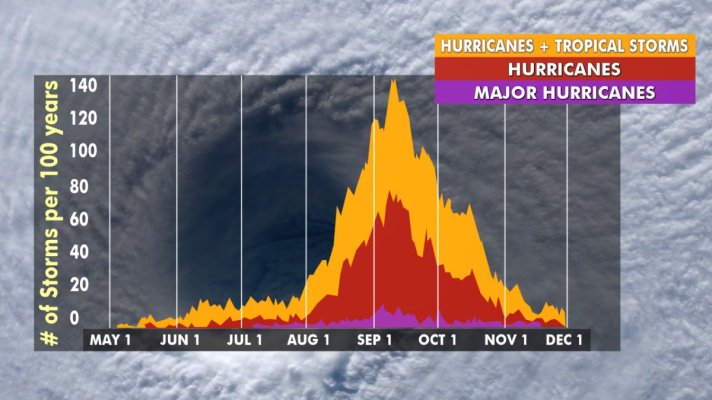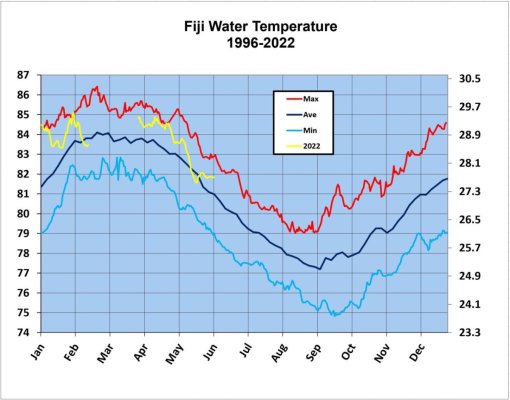Hey Guys,
I want to see if anyone is using a similar strategy. Heat is a killer for reef tanks during a hurricane. Last year for Hurricane Ida I personally had to tank down my tank, because I couldn't handle the heat for that long. Running a huge generator was really expensive. Not sure if anyone else has had thoughts on this. I am training my corals to deal with heat. Or more training myself to accept that these corals can get hot.
Hurricanes are a seasonal phenomenon, driven by surface sea temperatures. See Clear Water Beach Tampa Florida. Historical records show peaking on Labor Day, see graph below. It's something that coastal lovers like us deal with. We make preparations to handle these storms by purchasing back up generators. Unfortunately, the expense of an entire home back up generator, that also runs the Air conditioner --- is simply not possible for most people. A smaller generator is much more affordable just for the tank itself, cost wise to run.


As a result, home temperatures inside the house can reach into the upper 80's during a storm outage -- our temperatures in the tank can reach that high too without active cooling via fans or chillers -- but that can only go so far to get our tank back into the 70's with the ambient humidity and temperature so high during an outage.
So why not train them to accept seasonally higher temperatures? Well considering where they are collected in shallow water up to 4 to 40 meters deep. It's clear they live in a seasonal temperature range of 78 F to 84 F -- sometimes more extreme.

Enter the Apex Seasonal tables found on Apex.local (not fusion) Essentially what I've done is shift the seasonal temperature variation they would experience in the wild, as if they were living in the same temperature variation here close to the Gulf of Mexico. To train them to accept high temperatures according to the seasonal changes we experience naturally in Gulf which drives seasonal phenomena of Hurricanes. A smaller generator just keeping the basic life support going.
My hypothesis -- During an extended outage. No light. Just basic flow and areation, with adjusted temperature with fans, keeping it close to where it normally will be (based on the table below) can help push through an outage. This is because I have trained them to handle the higher than typical reef stable 77F to 79F temperatures.

Currently my aquarium has been running like this since May. I've slowly gone from 79F now to 83.3F and will peak at 84.1F and go slowly back down as if it was in the wild.
This Neptune Apex feature is also used in labs to drive coral spawning, along side with moonlight. I have yet to see spawning, because my tank isn't mature, but I haven't seen overly negative effects of running at a higher temperature.
I want to see if anyone is using a similar strategy. Heat is a killer for reef tanks during a hurricane. Last year for Hurricane Ida I personally had to tank down my tank, because I couldn't handle the heat for that long. Running a huge generator was really expensive. Not sure if anyone else has had thoughts on this. I am training my corals to deal with heat. Or more training myself to accept that these corals can get hot.
Hurricanes are a seasonal phenomenon, driven by surface sea temperatures. See Clear Water Beach Tampa Florida. Historical records show peaking on Labor Day, see graph below. It's something that coastal lovers like us deal with. We make preparations to handle these storms by purchasing back up generators. Unfortunately, the expense of an entire home back up generator, that also runs the Air conditioner --- is simply not possible for most people. A smaller generator is much more affordable just for the tank itself, cost wise to run.


As a result, home temperatures inside the house can reach into the upper 80's during a storm outage -- our temperatures in the tank can reach that high too without active cooling via fans or chillers -- but that can only go so far to get our tank back into the 70's with the ambient humidity and temperature so high during an outage.
So why not train them to accept seasonally higher temperatures? Well considering where they are collected in shallow water up to 4 to 40 meters deep. It's clear they live in a seasonal temperature range of 78 F to 84 F -- sometimes more extreme.

Enter the Apex Seasonal tables found on Apex.local (not fusion) Essentially what I've done is shift the seasonal temperature variation they would experience in the wild, as if they were living in the same temperature variation here close to the Gulf of Mexico. To train them to accept high temperatures according to the seasonal changes we experience naturally in Gulf which drives seasonal phenomena of Hurricanes. A smaller generator just keeping the basic life support going.
My hypothesis -- During an extended outage. No light. Just basic flow and areation, with adjusted temperature with fans, keeping it close to where it normally will be (based on the table below) can help push through an outage. This is because I have trained them to handle the higher than typical reef stable 77F to 79F temperatures.

Currently my aquarium has been running like this since May. I've slowly gone from 79F now to 83.3F and will peak at 84.1F and go slowly back down as if it was in the wild.
This Neptune Apex feature is also used in labs to drive coral spawning, along side with moonlight. I have yet to see spawning, because my tank isn't mature, but I haven't seen overly negative effects of running at a higher temperature.



















